The 2nd Foreign Cavalry Regiment (2e REC) was one of the two cavalry regiments of the French Foreign Legion. Established in Morocco in 1939, its legionnaires took part in the 1940 Battle of France. Inactivated the same year, the regiment was reconstituted in 1946 to train and provide men for the older cavalry regiment, 1er REC, fighting in the Far East.
Thereafter, in 1956, the unit moved to Algeria to participate in the ongoing war there, until 1962. That year, the 2e REC was disbanded. Today, its regimental standard is guarded by DLEM, a Foreign Legion unit based in the Indian Ocean.
La version française de cet article: 2e Régiment Étranger de Cavalerie
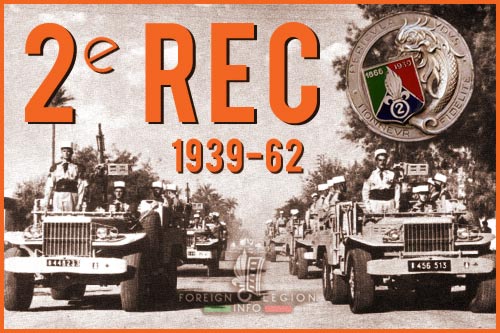
Morocco and Foreign Legion cavalrymen before WWII
In 1907, the Pacification of Morocco started. A French large military campaign in a country in North Africa, which became a French protectorate in 1912. The Foreign Legion had participated in the campaign since the very beginning.
In the early 1920s, the Legion was reorganized and reinforced by a cavalry regiment, the 1er REC. Since 1925, its squadrons (mounted or motorized) had been deploying to Morocco on a regular basis, to fight against local rebels.
In 1934, the pacification was successfully over. However, three Foreign Legion cavalry squadrons stayed in Morocco and formed an administratively autonomous group (groupement, an equivalent to an infantry battalion). They would conduct patrols and maintain order in the central and southern parts of the country, as well as road construction works.
In 1939, the 1st REC’s Moroccan Squadron Group (Groupement des Escadrons du 1er REC au Maroc) was composed of the 3rd + 4th + 5th Squadron. The unit’s HQ was stationed in Midelt, a town in central Morocco.
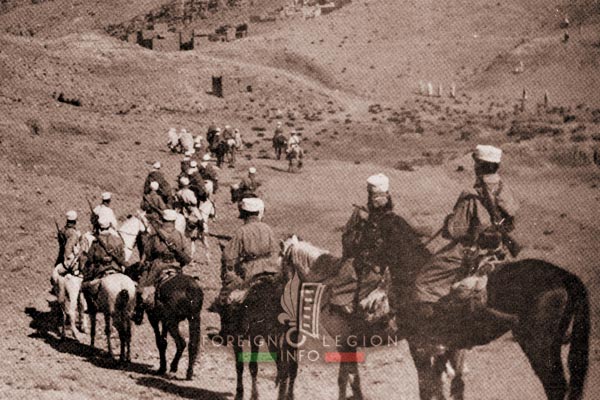

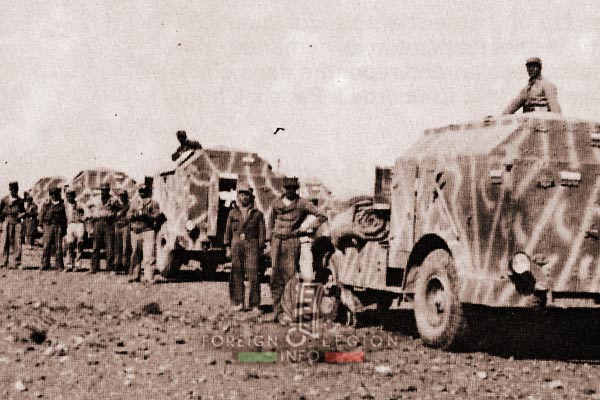
2nd Foreign Cavalry Regiment: 1939-40
In Europe, a new world war was coming in 1939. At the same time in North Africa, the French decided to create another Foreign Legion cavalry regiment, with the help of the squadron group stationed in Morocco. In late June 1939, the Squadron Group was reorganized, to give birth to the newly prescribed unit.
2nd Foreign Cavalry Regiment: First activation – 1939
In Morocco on July 1, 1939, a new unit was established: 2nd Foreign Cavalry Regiment (2e Régiment Étranger de Cavalerie, 2e REC).
The 2e REC was under the command of Lieutenant Colonel Charles Farine, a French cavalry officer, who had led the ex-Moroccan Squadron Group since June 1937. The regiment was based in Midelt (a town in central Morocco) and composed of the HQ + two mounted squadrons + a motorized squadron.
HQ
– stationed in Midelt
– headed by Lieutenant Colonel Farine
– with his deputy, Captain Aubry
– HQ administrated several 2e REC services
- Horse Group (3rd + 4th Squadrons): Major Billon
- Paymaster: Lieutenant Marque
- Communications/signals: Lieutenant Zur Nedden
- Equipment: Lieutenant Rivière
3rd Squadron
– the very first Legion cavalrymen in Morocco (1925)
– stationed at Bou Malne (a former post of the 4th Squadron)
– headed by Captain Jacques Colonna-Renucci
– he replaced Captain Testu de Balincourt
– his platoon leaders were:
- Lieutenant Alexandre Djintcharadzé (a Georgian)
– a provisional squadron commander until July 15 - Lieutenant Henri de Vismes
– the very first commander of 2e REP in Algeria in 1955 - Lieutenant Nodet
4th Squadron
– the famous unit being distinguished in Syria in 1925
– bearing a fourragère already
– stationed in Midelt (at Ouarzazate until May 1938)
– headed by Captain René Lennuyeux
– a future chief of the Foreign Legion (1955-58)
– his platoon leaders were:
- Lieutenant Makeiew
– he designed the first project of the 2e REC insignia - Lieutenant Mermet
- Lieutenant d’Annam
5th Squadron
– a motorized unit (two vehicles per platoon)
– White-Laffly and Panhard armored cars
– stationed at Ouarzazate
– headed by Captain Guibert
– his platoon leaders were:
- Lieutenant Breuil
- Lieutenant Prouhet
- Lieutenant Sokoloff
The 2e REC was nicknamed as the Dauphin-Foreign (Dauphin Étranger), while the 1er REC was nicknamed as the Royal-Foreign. Dauphin was the title given to the heir apparent to the French throne from 1350 to 1830. The regiment’s nickname also referred to its predecessor, Dauphin-Foreign Regiment, a former cavalry unit created in 1666, by then French King Louis XIV for his son (Louis, le Grand Dauphin). The then unit was composed of foreigners and existed until 1761. In France, the word dauphin also means dolphin, an animal used on the Coat of arms of the Dauphin of France.
During the next weeks, the regiment (in fact, around 500 men) would wait for drafts and new equipments, conduct military courses and maintain order in assigned sectors. However, a larger organization of the 2e REC would be interrupted two months later, when France declared war on Germany. The Second World War started.
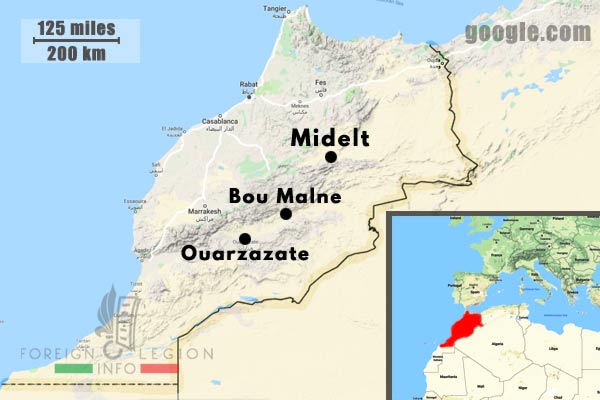
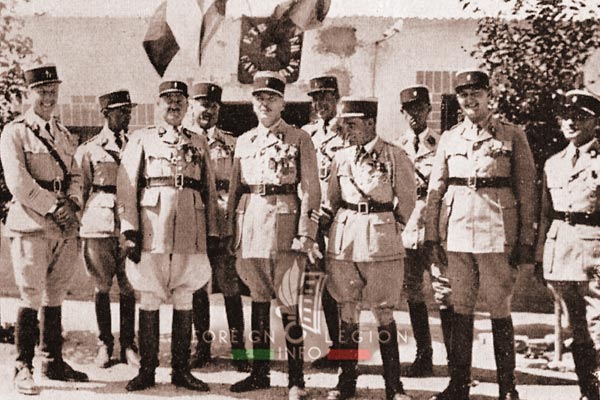
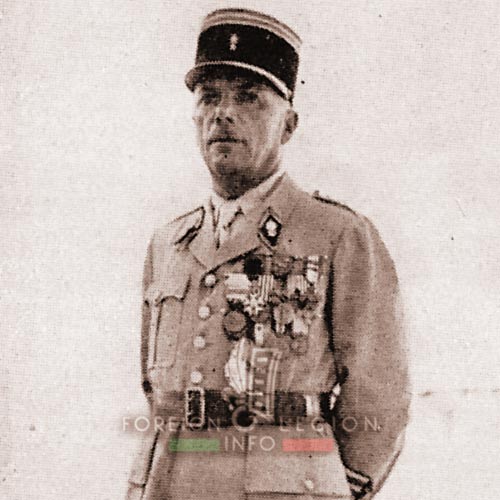
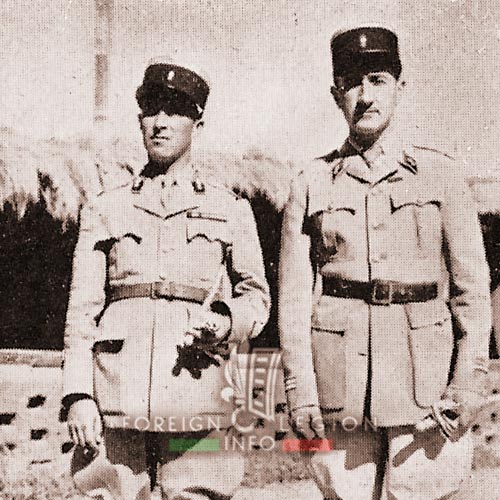
GRDI 97 and Battle of France 1940
In September 1939, after the German invasion of Poland, France and the United Kingdom declared war on Germany. All French units prepared for war. In North Africa, new provisional units were to be formed. Between them, a number of GRDI – Infantry Division Reconnaissance Group. These were composed of cavalrymen and served as mobile reconnaissance units for their respective divisions.
The cavalrymen of the Foreign Legion formed one of those units, GRDI 97 (ex-GRDI 180). It was organized in Tunisia in early February 1940, with a 1er REC squadron, the 2e REC squadron of Captain Colonna-Renucci and with 360 men coming from the Foreign Legion depot of Algeria. These men formed another two squadrons. One of them was led by Captain Djintcharadzé (ex-Lieutenant and a deputy to Captain Colonna-Renucci in the 2e REC).
The GRDI 97 would be headed by Lieutenant Colonel Paul Lacombe de la Tour, a non-Legion officer, and assigned to the 7e DINA (North African Infantry Division).
In May-June 1940, the GRDI took part in the Battle of France. The cavalrymen faced German troops invading France. They fought fiercely to stop the enemy invasion. In late June, after the battle was over, two-thirds (over 400 men) of their strength were killed, wounded or missed. Between the killed, Lieutenant Colonel Paul Lacombe de la Tour, their commander, killed on June 9. He was replaced by Captain Guiraud from the 1er REC mounted squadron of the GRDI.
On 22 June of 1940, the Armistice was signed between France and Germany. The men left the front and stayed in France until September, when they were shipped back to North Africa. In Tunisia on September 30, 1940, the GRDI 97 was disbanded. The 2e REC men returned back to Morocco to rejoin their regiment, but not for a long time.

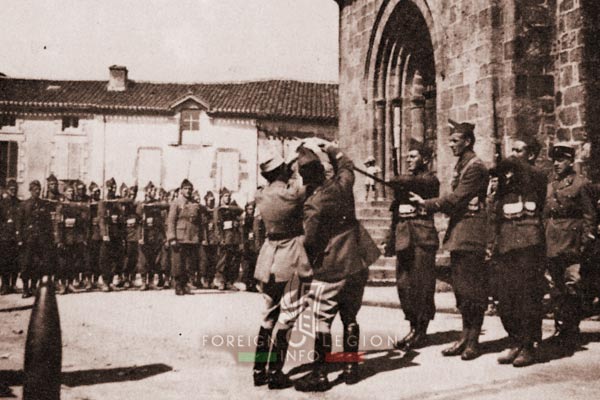
2e REC: Deactivation
Because of the Armistice and the reorganization of the French Army, the 2nd Foreign Cavalry Regiment was deactivated on November 15, 1940. The men would be assigned to the 1er REC and the standard deposited at the Hall of Honor of the Foreign Legion’s HQ in Sidi Bel Abbes, Algeria.
2e REC: First Regimental Insignia
Some time before the official creation of the 2e REC, Lieutenant Makeiew, then a deputy commander of the 4th Squadron, 1er REC had designed the project of the future insignia of the new regiment. On the 1st July, 1939, he presented and handed over his framed project to Lt Col Farine at the Restaurant du Coq d’Or of Midelt, where 2er REC officers celebrated the birth of their unit. The commanding officer thanked to Lieutenant Makeiew and hung the insignia on the wall.
In July 1939, Lieutenant d’Annam from the same squadron (now 4th Squadron, 2e REC) made a wooden maquette of the insignia (where the REG ETRANGER de CAVALERIE words were replaced by VALEUR ET DISCIPLINE, an old motto of the Legion coming from the Napoleonic times). On August 9, 1939, the insignia was approved by French military officials in Morocco. But the coming world war stopped any other action to furnish the regiment with this insignia…
However, contrary to all current sources stating that any insignia hasn’t been ever made, a set of these insignias were made by a local producer in Oujda yet in late 1939. According to Captain F. and his testimony in a 1968 Kepi Blanc magazine of the Legion, Lieutenant Makeiew distributed these silver-plated metal insignia among officers of his Depot Squadron, GRDI 97 when being stationed at Sathonay (France) in June 1940, as part of the Sathonay Provisional Battalion of the Foreign Legion to defend Lyon. According to the captain, the officers attached their new insignia on the uniform.
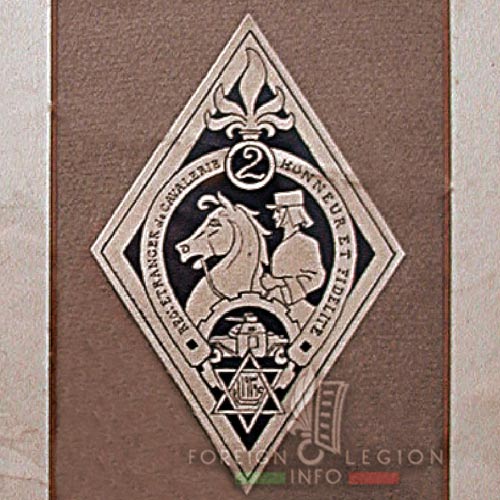
2nd Foreign Cavalry Regiment: Morocco in 1946-56
In Southeast Asia in September 1945, after the end of the Second World War, the Viet Minh movement of Ho Chi Minh declared independence from France for Vietnam, part of then French Indochina. The French troops, including legionnaires, started to deploy to Indochina to save and restore the French empire. In early 1946, first Foreign Legion units landed in Asia.
The same year, a decision to ship the 1er REC to Indochina took place. The regiment being stationed in Morocco at the time should be replaced there. The 2e REC would have been reactivated for the first time since 1940.
2nd Foreign Cavalry Regiment: Second activation – June 1946
The 2e REC was reactivated on June 1, 1946. The regiment was led by Lieutenant Colonel René Lennuyeux, a former commander of the 4th Squadron, 2e REC in 1939-40. The new regiment was composed of a HQ squadron and two reconnaissance squadrons (2nd + 3rd). They were formed in Sidi Bel Abbes of Algeria, with elements coming from the 1er REC and the DCRE (Legion Depot). In July and August, both squadrons moved to Ain El Hadjar, a Foreign Legion instruction center in the Saida region, north of Sidi Bel Abbes.
In early September 1946, the squadrons were stationed in Orleansville, Blida and Tenes. The 2e REC would be deactivated for the second time a week later, on September 9, 1946, due to a military budget reason. The men returned to Sidi Bel Abbes.
2nd Foreign Cavalry Regiment: Third activation – November 1946
For the third time, the 2e REC was activated on November 1, 1946. The regiment would be led by Lieutenant Colonel René Lennuyeux again. But now, it returns to Morocco. The 2e REC would be stationed in Oujda, at the border with Algeria. The unit would replace there the 1er REC, which was to deploy to Indochina in December. There, the First Indochina War (1946-54) began the same month between France and the Viet Minh.
The 2e REC was divided into five squadrons, placed at Camp Clark and Camp Roze in Oujda.
- HQ Squadron (EHR)
- 1st Squadron (1ESC)
- 2nd Squadron (2ESC)
- 3rd Squadron (3ESC)
- 4th Squadron (4ESC)
2e REC: Equipment
The 2e REC in Morocco inherited the U.S. eqiupment of the 1er REC (the regiment left Morocco as an infantry unit, without any vehicle) used during the campaign in France, Germany and Austria in 1944-45:
– AMM8 (M8 Greyhound) armored cars
– M3A3 Stuart tanks
– M3 Half Tracks
2e REC: Missions
The regiment should carry out several tasks in Morocco. First, it replaced its predecessor as a general reserve unit of the French forces in Morocco. That means a unit to maintain order in the region and to be ready to react rapidly if necessary. The 2e REC would also participate in military maneuvers and exercises of the Brigade of Oujda.
Second, the 2e REC became an instruction unit to train future cavalrymen as drafts for the 1er REC fighting in Indochina. The young enlisted volunteers chosen for cavalry did their Foreign Legion four-month basic training directly in Oujda, within the regiment. The same went for young cavalry officers freshly arrived in the Legion.
Third, the 2e REC served as a transit unit for 1er REC cadres and legionnaires returning from their prescribed two-year deployment in Indochina. They stayed there for up to a year before being once again shipped back to Asia.
Finally, the 2e REC legionnaires served (as had done all legionnaires since the very beginning) as bâtisseurs – builders. They were cultivating the desert land of the Oujda sector (with tree planting, setting up gardens), were (re-)building their installations (including a new swimming pool) and conducted road construction works.


2nd Foreign Cavalry Regiment: 1946-54
During the winter of 1946-47, the new regimental insignia was designed by Lieutenant Arfeux, the then commander of the HQ Squadron. This officer also participated in the establishment of the very last mounted squadron of the Legion.
– Mounted Squadron, 2e REC
– a squadron furnished with horses
– created in February 1947
– to be deployed to Indochina
– consisting of 75 cavalrymen
– led by Lieutenant Arfeux
– the commander of HQ Squadron
– disbanded two month later, in April
– the elements were sent to Indochina
– without horses, as infantrymen
– the very last mounted squadron of the Legion
In late 1947, the 2e REC men were building a regimental recreation center at Saida, Algeria.
In late March 1948, the 4th Squadron was disbanded. Its men (5 officers + 18 NCOs + 176 legionnaires) would be sent to Indochina four months later. In June, the regiment was involved in operations to maintain order in the Oujda, Martimprey, Berkane and Berguent regions.
In early August 1948, Lieutenant Colonel Paul de Chazelles took command of the 2e REC.
On June 1, 1949, the new 4th Squadron was re-established in Sidi Bel Abbes, Algeria. Led by Captain Raymond Calmels, the new unit was sent to Madagascar (an island in the Indian Ocean) in late July, to support legionnaires from the 4th Battalion, 4e REI and from an engineer company being stationed there. This almost unknown squadron would maintain order on the island until December 1951. Then, the unit returned to Algeria on January 25, 1952 and was disbanded.
In 1952, Lieutenant Colonel Berchet took command of the 2e REC.
The same year, the War Memorial of Foreign Legion cavalrymen was moved to Camp Clark in Oujda, Morocco. The memorial was raised in Sousse, Tunisia before WWII. Today (2019), the monument is placed within the camp of 1er REC at Carpiagne, southern France.
In January 1953, Lieutenant Colonel Jacques Colonna-Renucci of the 2e REC. A squadron commander with the regiment and with the GRDI 97 in 1939-40.
In August 1953, the 2e REC men were involved in first serious clashes with rebels in Morocco. Four legionnaires were killed. In March 1954, the regiment participated in a military maneuver at Nemours (now Ghazaouet), a town in Algeria, at the border with Morocco.
In May 1954, a detachment consisting of 2 officers + 13 NCOs + 50 legionnaires moved to Epernay (northern France) to attend a course to familiarize with France’s new AMX 13 tanks destined to replace the U.S. ones within the regiment.
In June 1954, the last large draft of the 2e REC left Morocco for Indochina. There, part of the men would reinforce a newly reactivated 1er BEP (Parachute Battalion, future 1er REP), annihilated during the Battle of Dien Bien Phu a few weeks ago.



2nd Foreign Cavalry Regiment: 1954-56
In early August 1954, the First Indochina War was over, as well as the mission for the 2e REC to provide drafts for Indochina. However, the peace time lasted only a few weeks. In 1954, local rebels intensified their military actions in Morocco, Tunisia and Algeria. These actions were aimed at French forces stationed there. In November 1954, Algeria saw a series of serious rebel attacks across the country. The main rebel force fighting the French was the FLN (National Liberation Front). In 1955, the clashes escalated into the Algerian War (1954-62).
In August and September 1954, the AMX 13 light tanks arrived in the regiment to replace the old U.S. M3A3 tanks. With the new equipment, the regiment has to be reorganized. It ceased to be an instruction unit and was designated as an operational unit.
- HQ Squadron
- 1st Squadron (a recon unit, AMM8 armored cars)
- 2nd Squadron (AMX 13 tanks)
- 3rd Squadron (AMX 13 tanks)
In mid-January 1955, Lieutenant Colonel Jean-Louis Legendre took command of the 2e REC. He had just returned from Indochina, where he commanded the 2e GA (Amphibious Group), 1er REC between 1952-54. He also served as a young officer of the 1er REC in Morocco before WWII.
In May, the 2e REC patrolled the Algeria-Morocco border. In August 1955, a large modernization of Camp Clark bagan, as well as a period of patrols and guards in the Oujda sector. These actions responded to previous rebel attacks and massacres aimed at French civilians in several towns of Morocco.
In November 1955, an important element was integrated into the regiment – 2e GA, 1er REC and became the Motorized Squadron Group (GEP).
– Motorized Squadron Group
– Groupe d’Escadrons Portés (GEP)
– ex-2e GA, 1er REC (Amphibious Group)
– one of the two elements of 1er REC in Indochina
– a former unit of Lt Col Legendre
– having returned from Indochina in late October
– ex-1st + 8th + 11th Squadrons, 1er REC
– 21 officers + 109 NCOs + 436 legionnaires
– 566 men in total
– GEP was stationed in Meknes, Morocco
– to become an autonomous unit
– HQ + 4th + 5th Squadron, 2e REC
– GEP was led by Major Bernard Vignon
– later led by Major René Raffenne
Between November 1955 and April 1956, the 2e REC was at its greatest strength, consisting of six squadrons:
- HQ Squadron (ECS)
- 1st Squadron (AMM8 armored cars)
- 2nd Squadron (AMX 13 tanks) – Captain Hautechaud
- 3rd Squadron (AMX 13 tanks) – Captain Reglade
- 4th Squadron (AMM8 armored cars) – Captain Claudepierre
- 5th Squadron (Scout-cars) – Captain Werth
In 1956, the 2e REC patrolled alongside the Algeria-Morocco border, in the prescribed sector between Oujda and Figuig, a small military border post lost in a desert region. Often, the cavalrymen conducted their patrols on foot, without vehicles. The GEP operated in the Middle Atlas range.
Independence of Morocco. In March 1956, Morocco gained its independence. All French units, including the 2e REC, had to leave the country and move to Algeria. Since then, the French units in Morocco were not allowed to conduct military operations.
Following the independence, the regiment should be reduced. The GEP in Meknes was disbanded on April 30, 1956. Its 4th Squadron was dissolved and the 5th Squadron became a new 4th Squadron of the 2e REC. The latter rejoined the regiment in Oujda.
In June 1956, Operation Zoulou and Operation Pygmée in the Nedroma region of Algeria, at the Moroccan border.
In late June, Colonel Legendre and 1st + 4th Squadrons, 2e REC left Oujda and moved to Figuig. Here, in the desert, they would spend a very hot summer. Alongside 4e REI, another Foreign Legion regiment also stationed in Morocco at the time. Many saw this as a punition following the Moroccan independence.
In July 1956, the 2nd Squadron in Oujda received five new AMX 13 tanks with a modernized FL 11 turret – AMX 13 FL 11. The only five tanks ever made. The squadron also received AMX 13 tanks with FL 10 turret. Then, the unit would be assigned to the 1er REP in Algeria to train for Operation Musketeer, an Anglo-French invasion of Egypt. The 2nd Squadron left Morocco in early August.
The remaining unit of the 2e REC in Oujda, 3rd Squadron, conducted its last patrol at Bou Arfa in the Figuig sector in late September, before leaving the town and the country for Algeria in early October 1956. The rest of the regiment followed. Three times born in Morocco to spend 11 years there, the 2e REC would never return back.
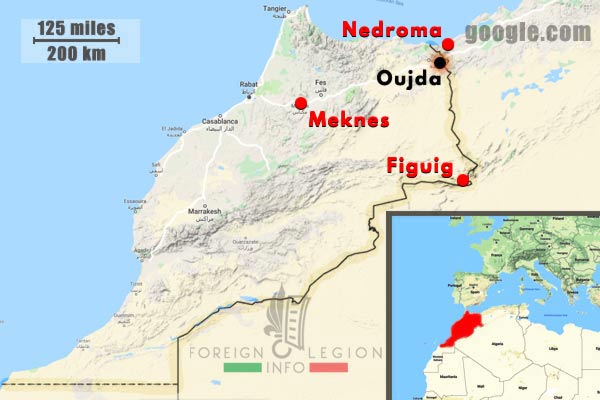
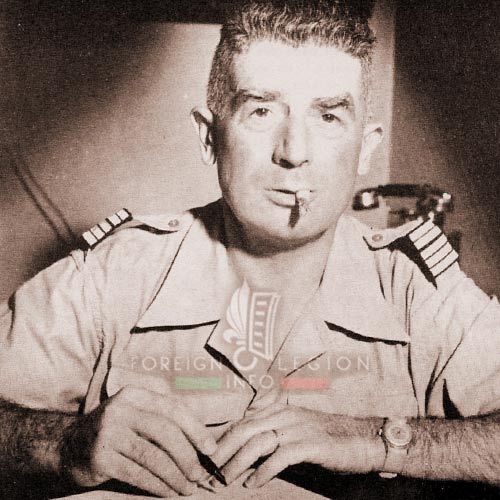
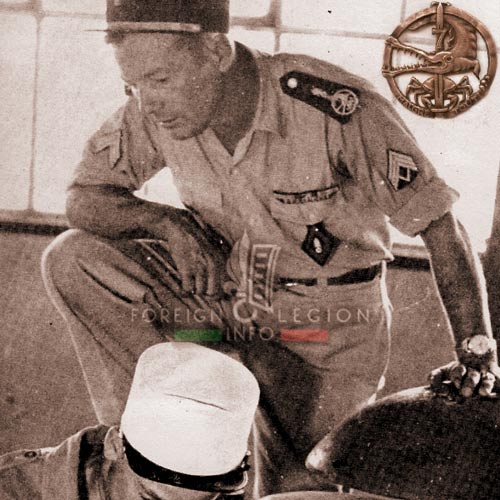
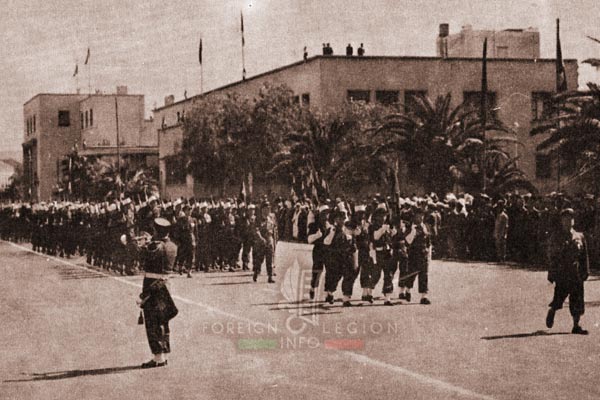
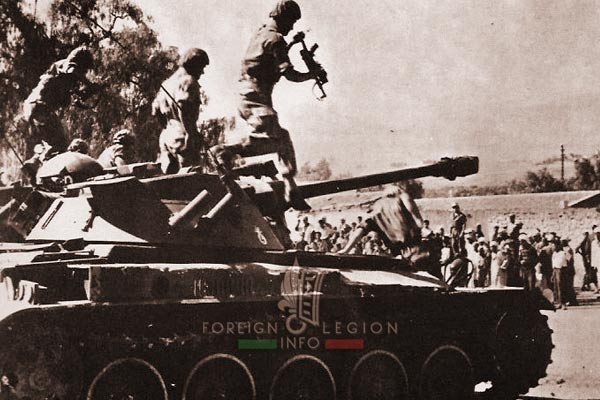

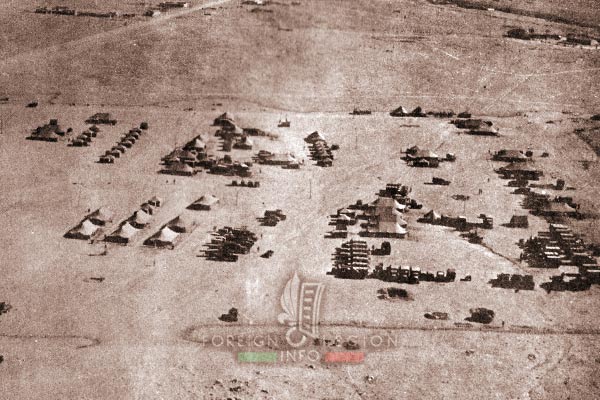

2nd Foreign Cavalry Regiment: Algeria in 1956-62
In early October 1956, the 2e REC had to leave Morocco, its homeland. The regiment moved by train to Algeria to join the ongoing war there. The AMX 13 tanks were left in Morocco, as unsuitable equipment for coming military operations. The 2e REC arrived in Algeria in late October.
After a short stay in Biskra, the regiment’s HQ was stationed at Ouargla in central Algeria, close to the Saharan Desert.
2e REC in mid-November 1956:
- HQ Squadron (ECS) – Ouargla
- 1st Squadron (1ESC) – Touggourt
- 2nd Squadron (2ESC) – in Egypt
- 3rd Squadron (3ESC) – Ghardaia + Laghouat
- 4th Squadron (4ESC) – Ouargla
The squadrons in Algeria were composed of two armored platoons equipped with AMM8 cars + two motorized platoons equipped with Dodges. Their mission was to maintain order in the region and participate in military operations.
In December 1956, Colonel Legendre left the regiment.
2nd Foreign Cavalry Regiment in 1957: Laghouat
In mid-January 1957, Lieutenant Colonel Etienne Ogier de Baulny took command of the 2e REC. He was a Legion cavalry veteran from an old French nobility family. He moved with his HQ from Ouargla to Ghardaia. In April, the HQ was placed at Laghouat, then a garrison town of 2e CSPL.
At the time, the squadrons of 2e REC served as semi-autonomous units. The 1st Squadron moved to the M’Raier sector (north of Touggourt) to protect road construction works carried out in support of newly established oil fields. In May, the squadron participated in several operations alongside the 2e REC in the Laghouat region. Thereafter, it returned to the oil fields in the south, to protect them. It would stay there until early 1958.
The 2nd Squadron left Egypt in late 1956. Back in Algeria in January 1957, it became Tank Squadron, 1er REP. The only cavalry unit of Foreign Legion paratroopers, using silver rank patches and cavalry rank titles. The squadron would cease to exist in 1958.
The 3rd Squadron moved to Laghouat, to be placed at Tadjmout thereafter. The squadron participated in military operations in the Laghouat region and was building its military installations.
The 4th Squadron moved to Sidi Makhlouf, north of Laghouat. The unit pacified the sector, alongside an assigned harka (an auxiliary unit consisting of local Muslim natives, often former rebels). Besides military operations, the squadron legionnaires provided medical treatments for local population, distributed food, built roads or planted palms.
On July 2, a fierce battle close to Zaccar for the 2e REC and 3e CSPL. That day, 80 rebels were killed.
When on operations in the mountain sectors, the legionnaires of 2e REC adopted helicopters.
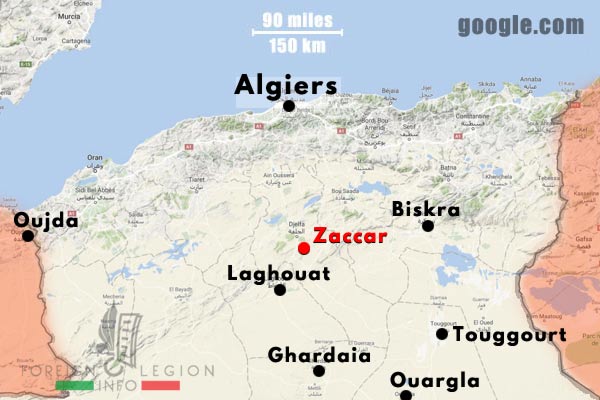
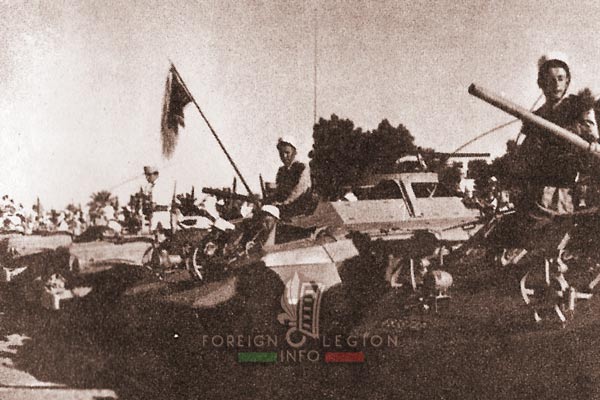
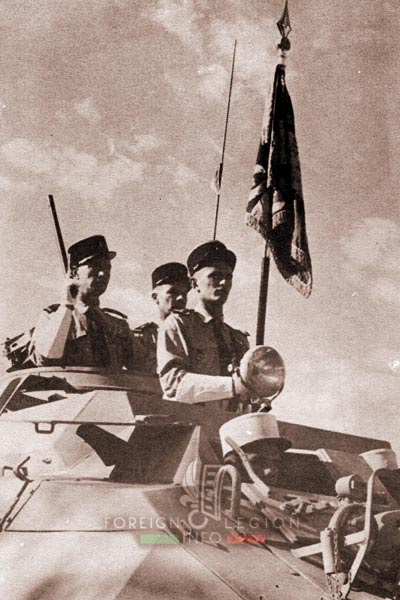
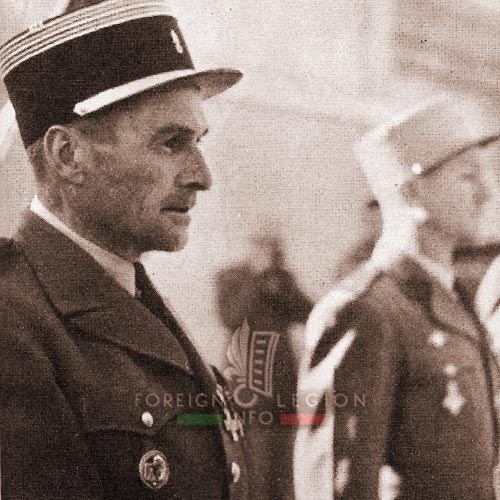
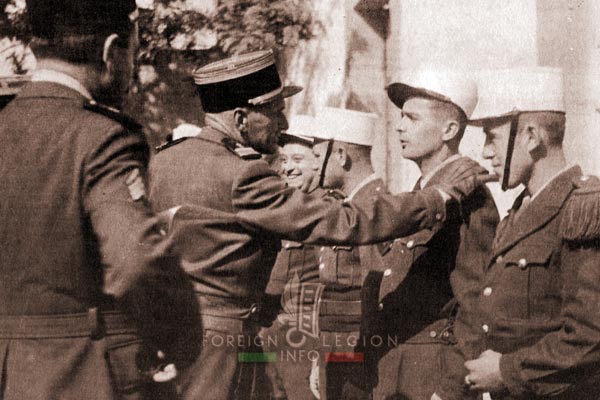
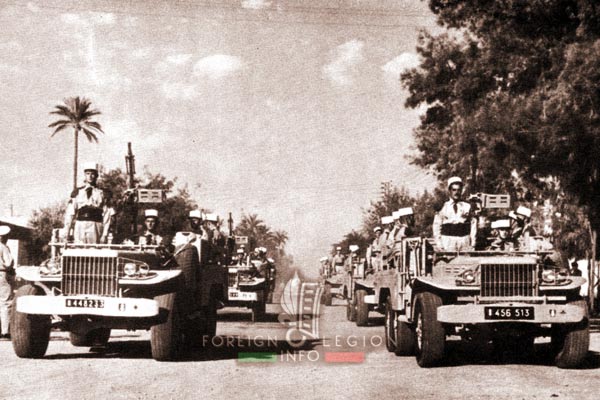

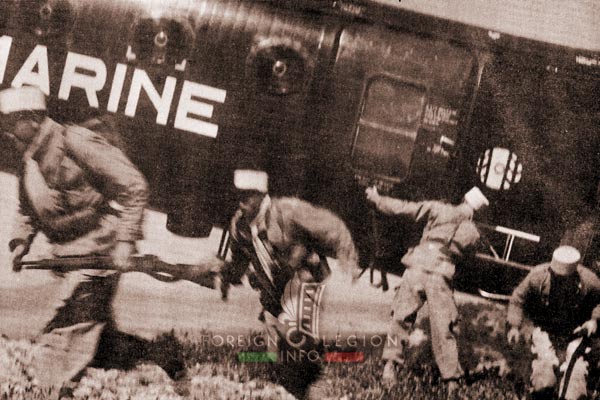

2nd Foreign Cavalry Regiment in 1958: Negrine
In early 1958, the 2e REC was gathered around Laghouat. In April, the regiment moved to Negrine, to participate in Mission Herse Mobile. The men were tasked with patrolling a 30-km long section of the electric fence border with Tunisia, alongside two motorized companies of 4e REI. They also guarded a hidden radar base in the sector.
On June 26, during the patrolling the border, a fierce battle with a large rebel group occurred. That day, 61 rebels were killed, 54 rebels were imprisoned.
The 2e REC left the Negrine region in December. In mid-December 1958, the regiment was stationed in the Djelfa region. In late December, 27 rebels were killed during a battle in the region.
2e REC in mid-December 1958:
- HQ Squadron (ECS) – Djelfa
- 1st Squadron (1ESC) – Zaccar
- 3rd Squadron (3ESC) – Rocher de Sel
- 4th Squadron (4ESC) – Djelfa
2nd Foreign Cavalry Regiment in 1959: Djelfa
In 1959, the regiment divided its activities between military operations (in the Charef, Aflou, Sidi Makhlouf or Bou Saada sectors) and (re-)construction of its posts. In June, the 1st Squadron took part in Operation Etincelle in the Hodna Mountains of the M’Sila region. That year, 383 rebels were killed, wounded or imprisoned by the 2e REC. The best results got the regiment on February 19. That day in the Charef sector, 90 rebels were killed + 17 rebels captured.
However, on May 12, Captain Pierre Guyot became the only officer of the 2e REC who died during an operation. He commanded the 1st Squadron at the time.
In November, a new 2nd Squadron was established within the regiment, after three years of being absent. It was reactivated with a former Arzew Amphibious Squadron (Escadron Amphibie d’Arzew, EAA), a unit equipped with Alligators (Landing Vehicle Tracked, LVT) and assigned until late October 1958 to the 1er RE. The new 2nd Squadron would be equipped with AMM8 armored cars. Led by Captain Piaton, the unit joined the regiment in early January 1960.
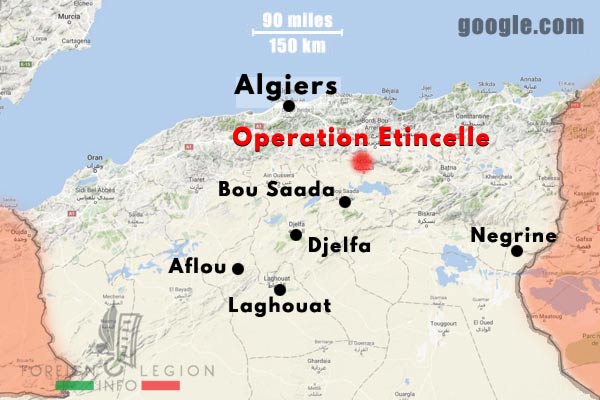
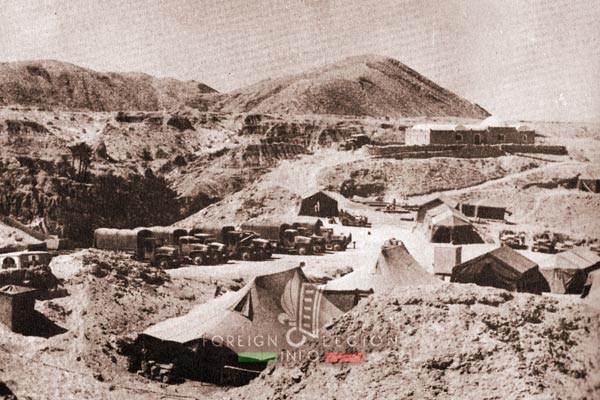
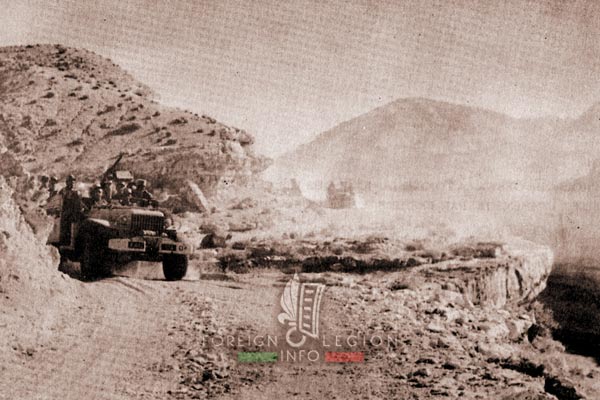
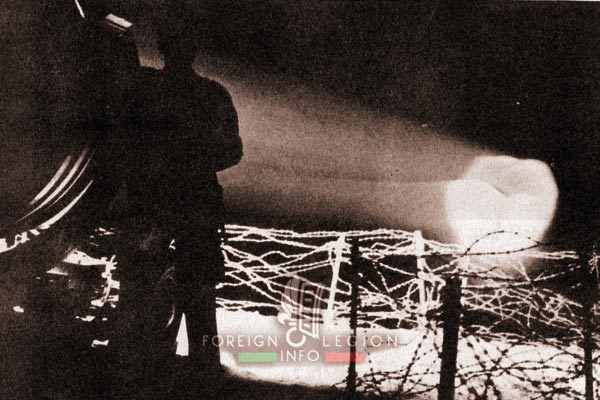

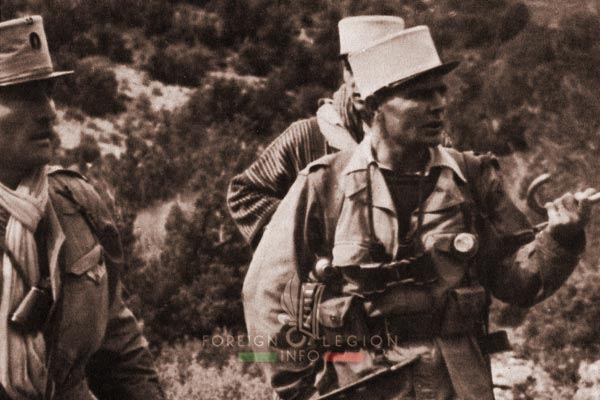


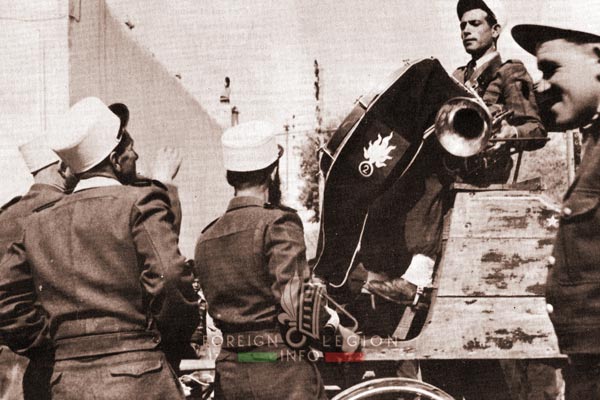
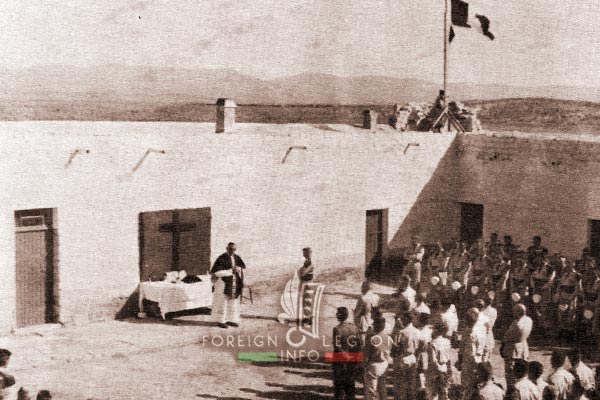
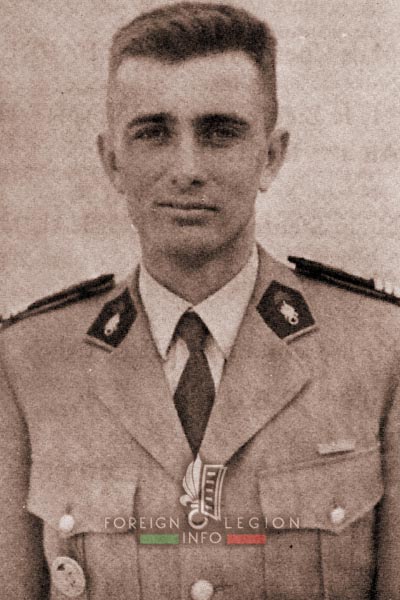
2nd Foreign Cavalry Regiment in 1960: Djelfa and Bou Kahil
In mid-January 1960, Lieutenant Colonel Charles de Coatgoureden took command of the 2e REC.
Until late September, the regiment operated in the Djelfa region. Dozens of operations were conducted and many rebels were killed. On January 21, a severe battle occurred at Gadet Meglires, a mountain north of Djelfa, in which 63 rebels were killed. However, 5 legionnaires were also killed. Two months later, March 22, another fierce fighting took place. At Djebel Mahreg, 21 rebels were killed or wounded. On June 6, 30 rebels were killed or wounded at Djebel Malleg.
In late September, the 2e REC moved east of Djelfa, to be based at Ain Errich. The commanding officer would command the French forces in the Bou Kahil sector until late November. Besides operations, the regiment carried out road construction works. On October 3, heavy clashes occurred near Djebel Bou Kahil, in which 21 rebels were killed. However, 6 legionnaires were also killed. On November 22, a battle took place at Djebel Saifoun. That day, 31 rebels were killed.
2nd Foreign Cavalry Regiment in 1961: Djelfa and Berrouaghia
In 1961, the operations continued in the region between Djelfa and Bou Saada, and in the sectors of Bou Kahil or Bou Melil. The squadrons supported French units as part of larger joint task forces. Tens of rebels were killed.
In July, the 2e REC squadrons were sent to Medea and Berrouaghia, south of Algiers, the capital. The men would maintain order in the sector for several weeks.
In August 1961, Lieutenant Colonel Henri Baldini took command of the 2e REC. He replaced his predecessor, who was too pro-putschist during the Generals’ Putsch of Algiers in April 1961.
2nd Foreign Cavalry Regiment in 1962: Biskra
In mid-January, the 2e REC left Djelfa, after three years of serving there. It would be replaced by the 3e REI. The 2e REC was sent to the Biskra sector, known to the unit already in October 1956. The regiment would be stationed at Zeribet El Oued and the nearby villages. Its administration services were placed in Biskra.
On March 19, 1962, the Algerian War was over. This fact led to a large reorganization of the French Army in North Africa, including the Foreign Legion. The Legion’s strength in Algeria would be considerably reduced. Unfortunately, the 2e REC would be affected among first units.
In April, the 2e REC moved again. The squadrons were stationed mostly at El Kantara, north of Biskra.
On June 12, an order was issued. The regiment has to be reduced to only two squadrons and merge with the 1er REC. They became 5th + 6th Squadron of 1er REC and will survive no more than one year. The 2e REC was the very first Legion unit affected by the reorganization of the post-colonial Army.
On July 31, 1962, the 2e REC was officially disbanded.
In Algeria, the regiment killed or imprisoned 1,022 rebels and lost 59 men.
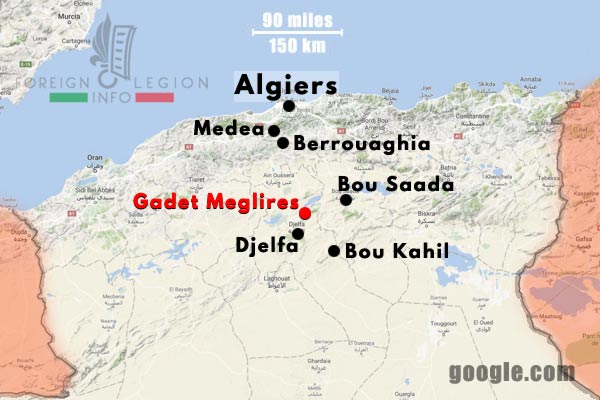
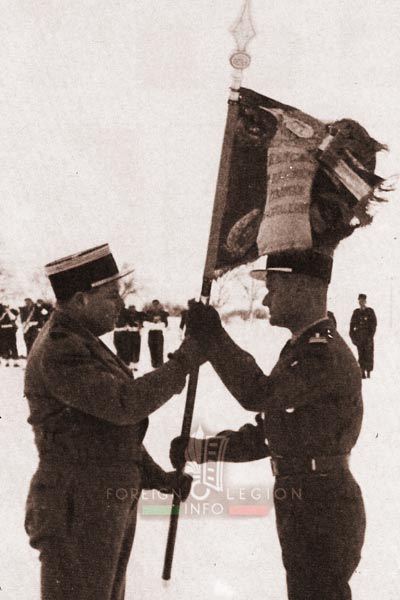
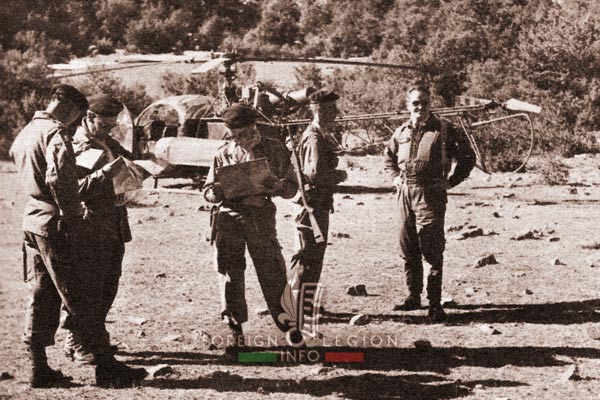
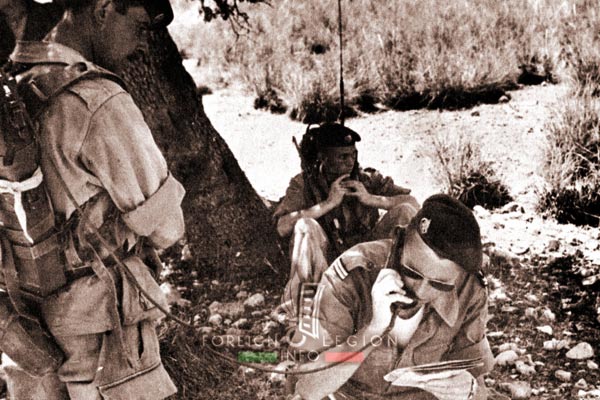
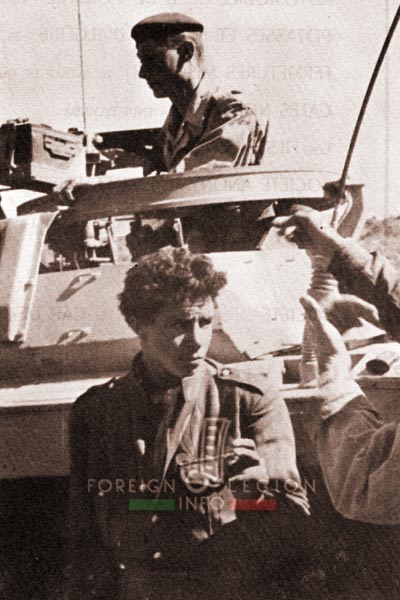
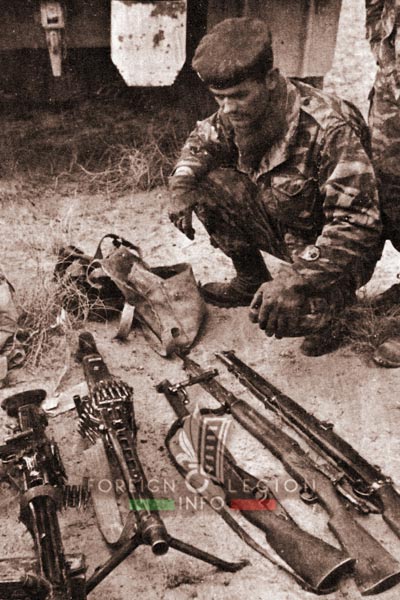
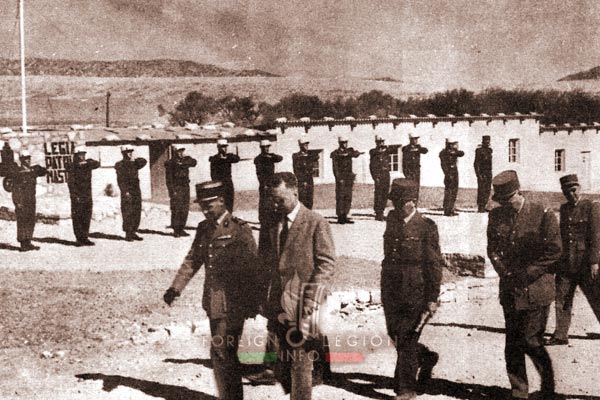


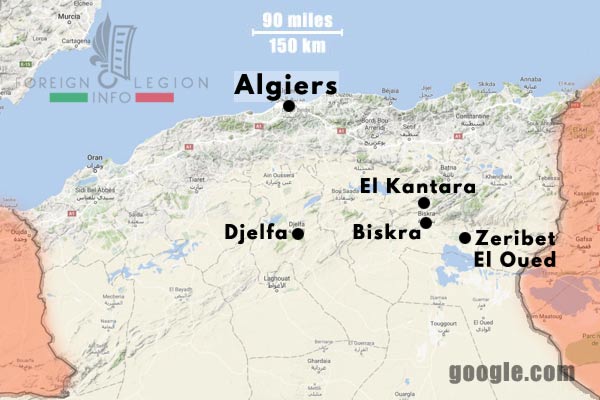
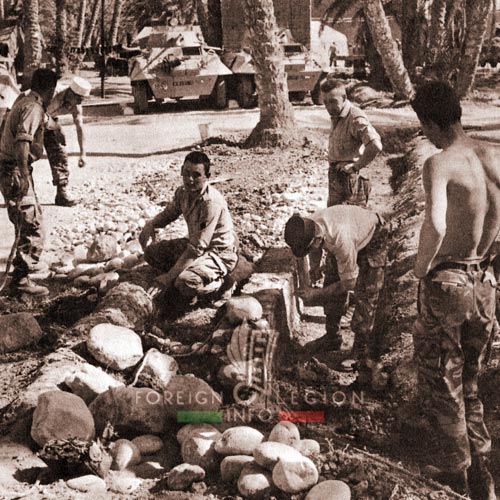
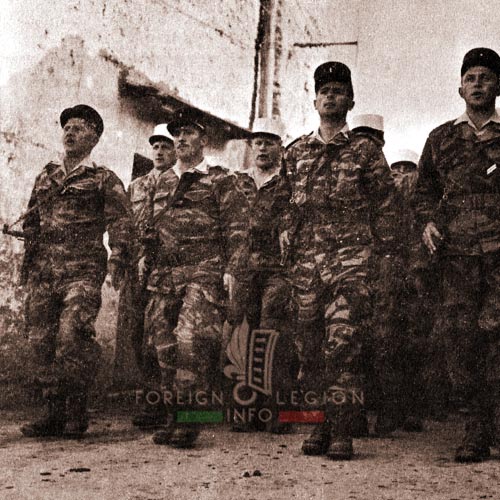
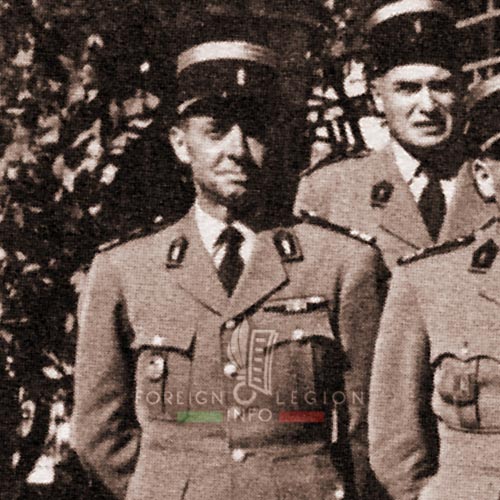
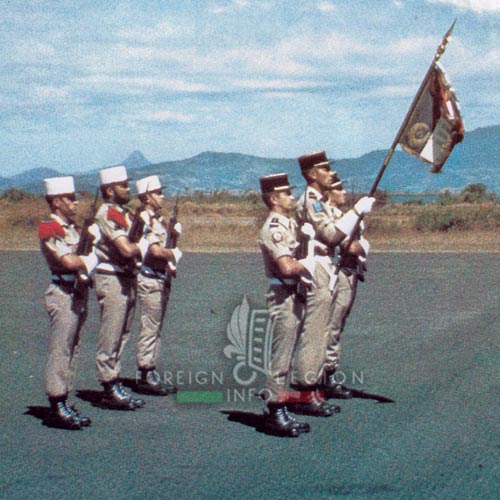
———

You can support this website at any time through our store. Thank you.
EU-based readers can visit our EU-based shop, to avoid import charges.
—
Main information & images sources:
Képi blanc magazines
Foreign Legion bulletins
Legion cavalerie
Cavaliers Blindés
Google Maps
Wikipedia.org
—
Foreign Legion’s other regiments disbanded after 1945:
1st Foreign Parachute Regiment
3rd Foreign Parachute Regiment
4th Foreign Infantry Regiment
5th Foreign Regiment
6th Foreign Infantry Regiment
—
The page was updated on: June 25, 2019
